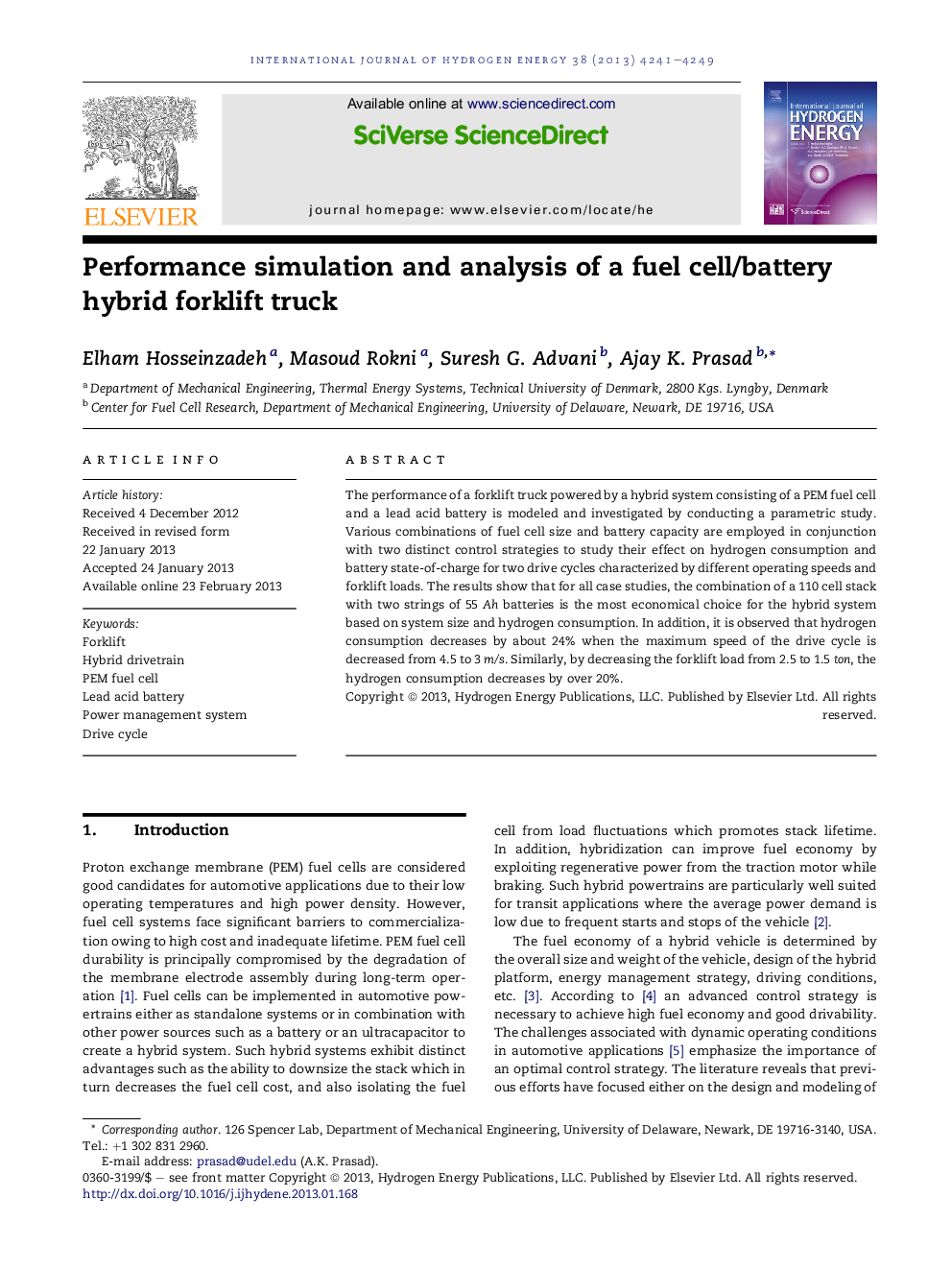| Article ID | Journal | Published Year | Pages | File Type |
|---|---|---|---|---|
| 1278116 | International Journal of Hydrogen Energy | 2013 | 9 Pages |
The performance of a forklift truck powered by a hybrid system consisting of a PEM fuel cell and a lead acid battery is modeled and investigated by conducting a parametric study. Various combinations of fuel cell size and battery capacity are employed in conjunction with two distinct control strategies to study their effect on hydrogen consumption and battery state-of-charge for two drive cycles characterized by different operating speeds and forklift loads. The results show that for all case studies, the combination of a 110 cell stack with two strings of 55 Ah batteries is the most economical choice for the hybrid system based on system size and hydrogen consumption. In addition, it is observed that hydrogen consumption decreases by about 24% when the maximum speed of the drive cycle is decreased from 4.5 to 3 m/s. Similarly, by decreasing the forklift load from 2.5 to 1.5 ton, the hydrogen consumption decreases by over 20%.
► A fuel cell/battery hybrid forklift was studied using our in-house software “LFM”. ► System performance was analyzed for two control strategies, and two drive cycles. ► We varied the fuel cell and battery sizes and identified the optimal topology.
